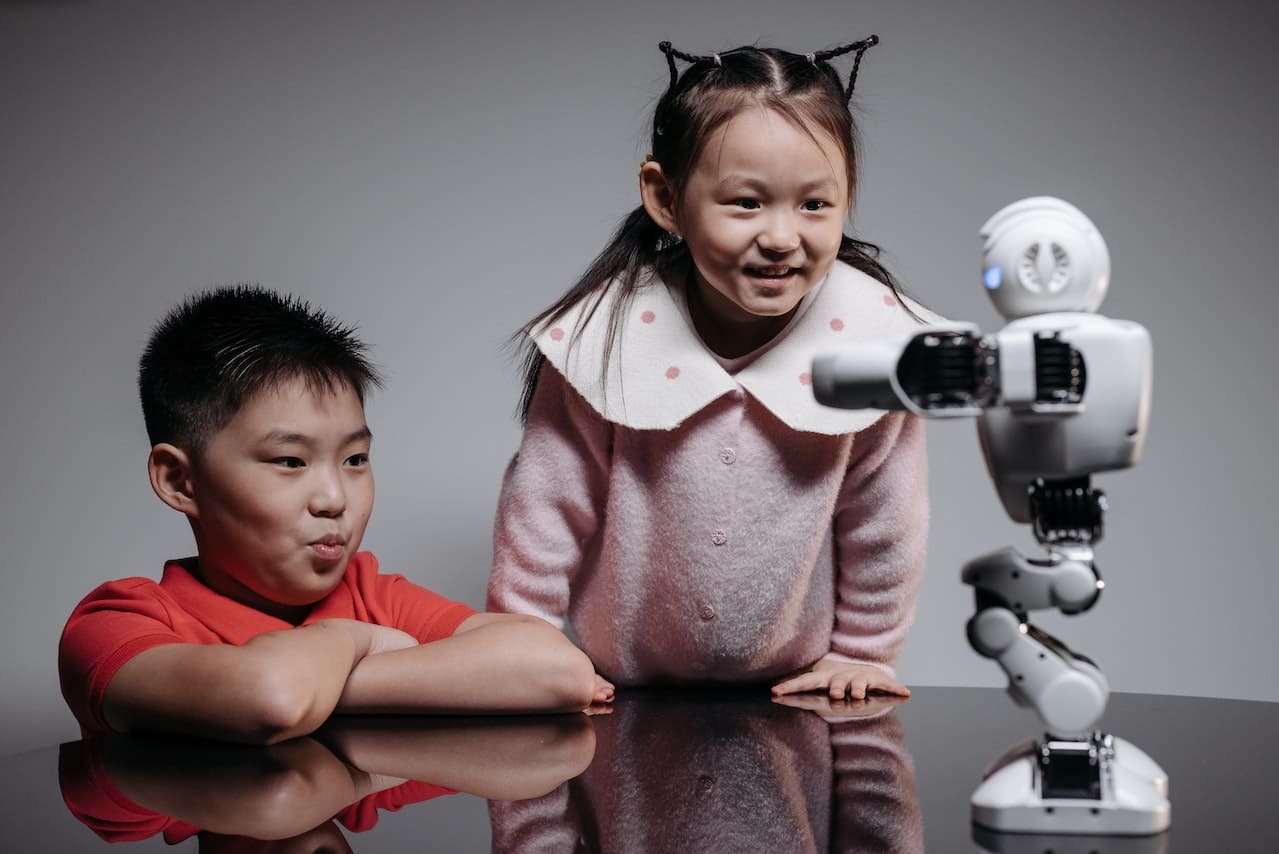Augmented Reality (AR) has emerged as a transformative technology that is reshaping industries and revolutionizing the way we perceive and interact with the world around us. By seamlessly blending virtual elements with the real world, AR is opening up new possibilities across a wide range of sectors, from gaming and entertainment to healthcare and education.
The gaming and entertainment industry is experiencing a paradigm shift with the advent of augmented reality (AR), as it introduces immersive experiences that redefine the entertainment landscape. AR has brought virtual elements into the real world, blurring the boundaries between physical and digital realms, and offering users a whole new level of interactive and engaging gameplay.
The emergence of AR in gaming and entertainment is reshaping the way we engage with virtual experiences. By blending virtual elements with the real world, AR has introduced immersive gameplay, mixed-reality interactions, and social collaboration. It has unlocked new levels of interactivity, creativity, and engagement, redefining the entertainment landscape and paving the way for exciting possibilities in the future of gaming. As AR technology continues to evolve, we can expect even more captivating and transformative experiences that will continue to captivate players and push the boundaries of interactive entertainment.
Retail and E-Commerce: Enhanced Shopping Experiences and Virtual Try-Ons
The world of retail and e-commerce is undergoing a significant transformation with the integration of augmented reality (AR), offering consumers enhanced shopping experiences and the convenience of virtual try-ons. AR technology is revolutionizing the way people shop, enabling them to make more informed purchasing decisions and providing retailers with innovative ways to engage customers.

AR has empowered retailers to offer virtual try-on experiences, eliminating the need for physical fitting rooms and allowing customers to visualize products on themselves before making a purchase. Whether it’s clothing, accessories, or even furniture, AR-powered applications enable shoppers to see how items will look and fit in their own space or on their own bodies. By overlaying digital representations of products onto real-time camera views, customers can virtually “try on” clothing, experiment with different styles, and assess the suitability of items without physically trying them on. This functionality enhances convenience, reduces the uncertainty of online shopping, and minimizes the likelihood of returns, resulting in a more satisfying and streamlined shopping experience.
Furthermore, AR-powered visualization tools have become invaluable for retailers selling larger items, such as furniture or home decor. Customers can use AR applications to virtually place furniture in their living spaces, allowing them to assess how it will fit, match their existing decor, and visualize the overall aesthetic before making a purchase. This capability not only saves time and effort but also offers a level of convenience and accuracy that was previously unavailable in traditional shopping experiences.
AR also enables retailers to create unique and immersive marketing campaigns. By incorporating AR features into advertisements or promotional materials, brands can captivate customers by providing interactive and memorable experiences. For instance, AR can be used to bring products to life through animated content, gamification, or storytelling, making the shopping experience more entertaining and engaging.
In conclusion, the integration of augmented reality in the retail and e-commerce sector is revolutionizing shopping experiences. Virtual try-ons and visualization tools powered by AR provide customers with a more immersive and informed way to shop for products, enhancing convenience and reducing uncertainty. Additionally, AR enables retailers to create interactive and captivating shopping environments, showcasing products in innovative ways and offering unique marketing opportunities. As AR technology continues to advance, we can anticipate further enhancements in the retail space, providing even more seamless and engaging shopping experiences for consumers worldwide.
Healthcare and Medical Training: Advancing Patient Care and Education
The field of healthcare and medical training is witnessing remarkable advancements with the integration of augmented reality (AR) technology, bringing significant improvements to patient care and medical education. AR is revolutionizing the way healthcare professionals diagnose, treat, and interact with patients, while also transforming the learning experience for aspiring medical practitioners.

AR has emerged as a powerful tool in healthcare by enhancing patient care and treatment outcomes. Surgeons can utilize AR to overlay digital information, such as medical images, diagnostic data, or real-time guidance, onto a patient’s anatomy during surgical procedures. This real-time visualization allows for precise and accurate surgical interventions, reducing the risk of complications and improving patient outcomes. AR also enables surgeons to access critical information without diverting their attention from the surgical field, enhancing workflow efficiency and patient safety.
AR is not only transforming patient care and medical education but also driving research and innovation in healthcare. It enables researchers to visualize and analyze complex medical data, such as molecular structures, disease progression, or treatment outcomes, in a more interactive and intuitive manner. This enhanced visualization capability can lead to breakthroughs in medical research, contributing to the development of new treatments, diagnostic tools, and personalized medicine.
In conclusion, augmented reality is advancing patient care and medical education by enhancing surgical interventions, improving clinical workflows, and providing immersive learning experiences for medical professionals. AR technology offers real-time visualization of patient data, improves diagnostic accuracy, and enables remote collaboration and telemedicine. As AR continues to evolve, we can expect even more transformative applications in healthcare, further improving patient outcomes, expanding access to quality education, and driving innovation in medical research.
Education and Training: Interactive Learning Experiences
The field of education and training is undergoing a remarkable transformation with the integration of augmented reality (AR) technology, offering students and learners interactive and immersive learning experiences. AR is revolutionizing the way knowledge is imparted, making learning more engaging, experiential, and accessible.

AR has introduced interactive learning experiences that transcend the limitations of traditional teaching methods. By overlaying virtual content onto the real-world environment, AR enables students to engage with educational material in a hands-on and interactive manner. For example, AR-powered applications can bring historical events to life, allowing students to explore virtual recreations of significant moments or visit famous landmarks. This approach fosters a deeper understanding of concepts, enhances retention, and makes learning more enjoyable and memorable.
One of the key benefits of AR in education is its ability to facilitate experiential learning. With AR, students can actively participate in simulations and real-world scenarios, bridging the gap between theory and practice. For instance, medical students can practice surgical procedures on virtual patients, engineering students can assemble and disassemble complex machinery, and language learners can engage in interactive conversations with virtual characters. These immersive experiences provide learners with valuable hands-on practice, critical thinking opportunities, and a deeper understanding of practical applications.

AR also offers a personalized learning experience by catering to individual student needs and learning styles. AR-powered educational platforms can adapt content based on students’ proficiency levels, providing tailored instruction and targeted interventions. This personalized approach promotes self-paced learning, allowing students to grasp concepts at their own speed and ensuring that they receive the support and challenges they need to succeed.
Furthermore, AR facilitates collaborative learning and teamwork. Students can engage in group activities and projects where they can interact with shared AR content and collaborate in real-time. For example, a physics class can work together to build and test virtual prototypes, a literature discussion group can explore interactive storytelling experiences, or a geography class can collaboratively explore a virtual globe. These collaborative learning experiences foster communication skills, teamwork, and problem-solving abilities, preparing students for the demands of the modern workforce.
AR also expands educational opportunities beyond the physical boundaries of the classroom. With AR-enabled devices, learners can access educational content anytime and anywhere, breaking down geographical barriers and providing equitable access to quality education. This technology enables remote learning, allowing students to participate in virtual lectures, engage in discussions, and access educational resources from any location. It also facilitates lifelong learning by offering interactive and engaging educational content for individuals of all ages.
In conclusion, augmented reality is transforming education and training by offering interactive and immersive learning experiences. AR technology engages students in hands-on activities, facilitates experiential learning, and promotes personalized instruction. It fosters collaboration and teamwork, expands educational opportunities beyond the classroom, and prepares learners for the challenges of the digital age. As AR continues to advance, we can anticipate even more innovative applications in education, further enhancing the way knowledge is acquired, shared, and applied.
Architecture and Design: Visualizing Concepts and Streamlining Workflows
The fields of architecture and design are undergoing a significant transformation with the integration of augmented reality (AR) technology, revolutionizing the way professionals visualize concepts, communicate ideas, and streamline workflows. AR offers architects, designers, and stakeholders a powerful tool for enhancing the design process, improving collaboration, and creating more immersive and engaging experiences.

AR enables architects and designers to visualize their concepts and designs in the real-world environment, providing a new level of spatial understanding. By overlaying digital models onto physical spaces, AR allows professionals to see how structures, interiors, and landscapes will look and interact within their intended contexts. This visual representation enhances the decision-making process, enabling designers to assess design elements, explore different options, and make informed choices about aesthetics, functionality, and spatial relationships.
Furthermore, AR is transforming the presentation of architectural and design projects. Through AR-enabled devices, professionals can create interactive and dynamic presentations that bring designs to life. AR-powered visualizations allow viewers to explore designs from various angles, interact with different elements, and understand the spatial relationships more intuitively. This immersive presentation approach enables stakeholders to grasp design concepts more easily, fostering better understanding and appreciation of the project.
In conclusion, augmented reality is transforming the architecture and design industries by enabling professionals to visualize concepts, enhance communication with clients, streamline workflows, and create immersive experiences. AR enhances the design process by providing spatial understanding, improving collaboration, and facilitating more informed decision-making. It streamlines workflows, reduces errors, and enhances on-site work efficiency. Moreover, AR-powered presentations and interior design applications offer interactive and dynamic experiences that engage stakeholders and clients on a new level. As AR technology continues to evolve, we can expect further advancements in the field, unlocking new possibilities and pushing the boundaries of architectural and design innovation.
Augmented reality is transforming industries and unlocking new possibilities across various sectors. From gaming and entertainment to healthcare, education, and beyond, AR is revolutionizing the way we experience and interact with our surroundings. The integration of virtual elements into the real world provides immersive experiences, enhances productivity, and improves decision-making processes. As AR technology continues to advance, we can expect further innovations that will shape the future of industries and enhance our everyday lives.


